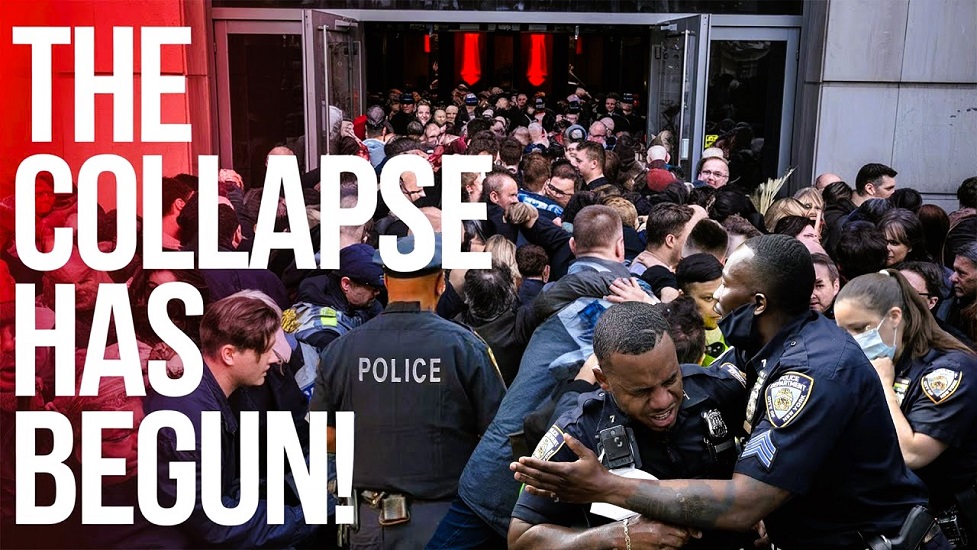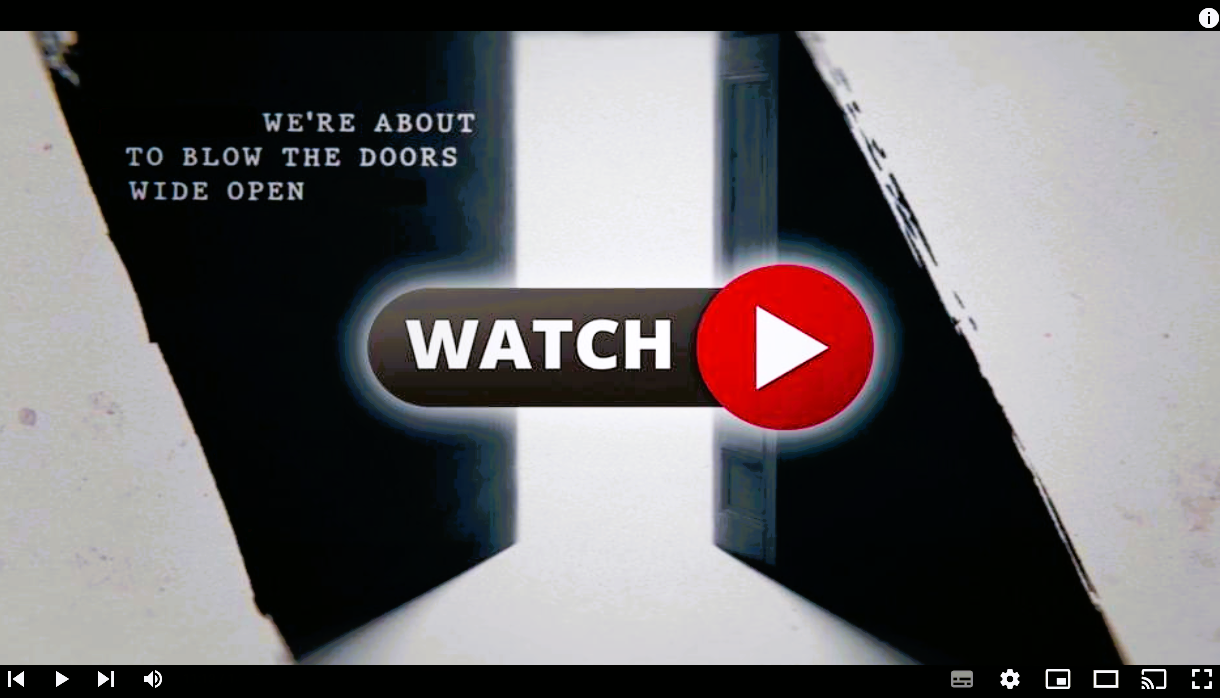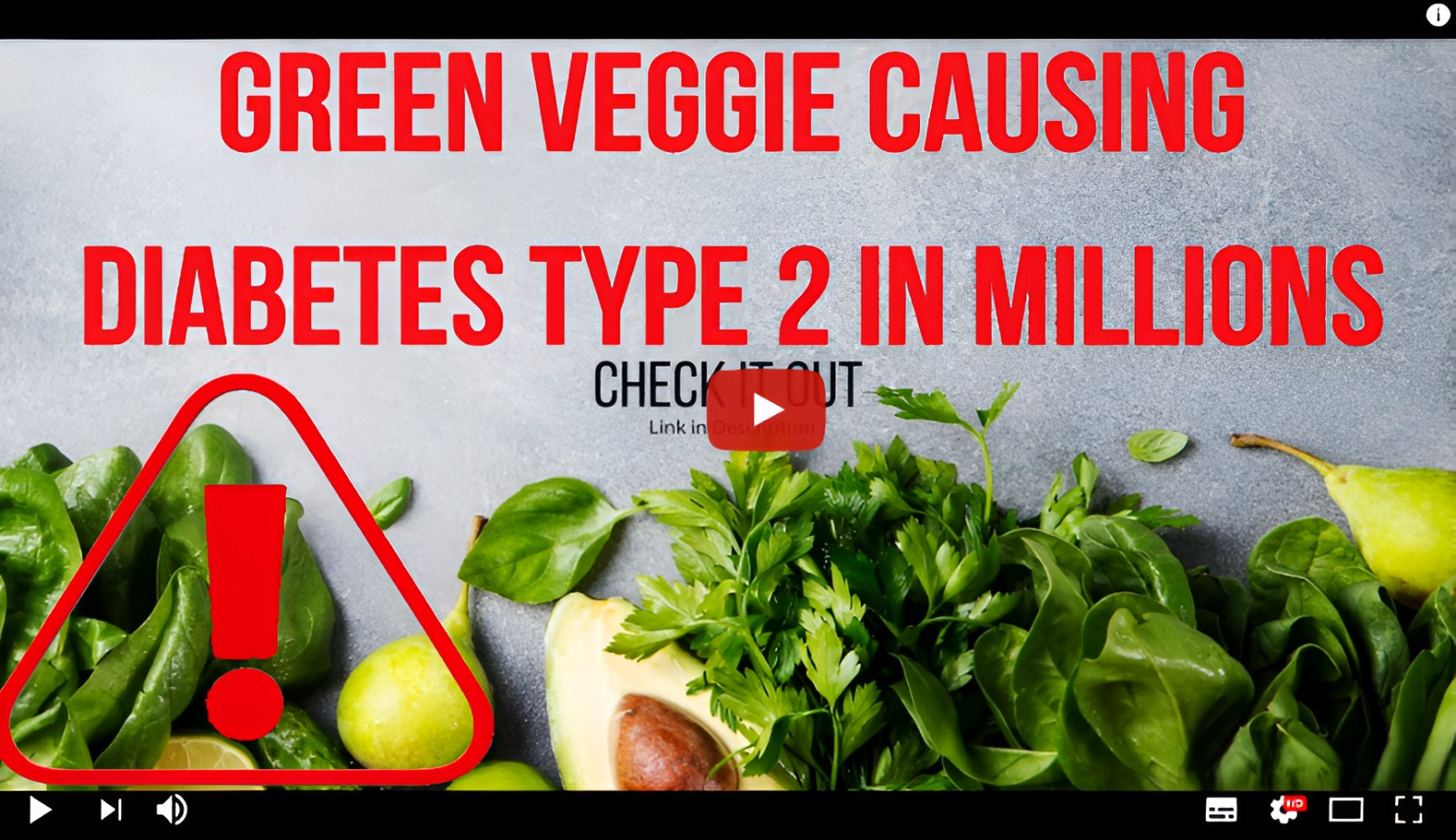Breaking Financial News: The Inevitable Collapse! Protect Your Money Now Because Banks Are Falling Apart All Around Us! Epic Economist Video
Ready to uncover the truth? Sick of the lies? Join our Telegram Channel now. It’s time for the real story! My gratitude to all my readers!
Banks are on the verge of collapse, and your savings could vanish overnight. Don’t wait for disaster—learn how to protect your money NOW with smart moves like diversifying accounts, securing cash reserves, and shifting to crisis-proof investments. Safeguard your finances before it’s too late!
What if I told you that the banks you trust with your life savings are on the brink of collapse? Right now, across America, hundreds of major banks are in peril, and your money could be at risk. But there’s still a way to secure your finances before the inevitable failure of these institutions unfolds. In this article, we’ll dive into the brewing crisis in the U.S. banking system and reveal how you can shield your savings in these uncertain times.
The Warning Signs: Is Your Money Safe?
For years, we’ve heard whispers of bank collapses, bailouts, and financial instability. But now, with inflation soaring, interest rates rising, and economic pressures tightening, the time for casual concern has passed. Major U.S. banks, which we’ve relied on as bedrocks of stability, are now showing signs of severe stress. And you have every reason to wonder: Is my money really safe in the bank?
In just the past year, numerous well-established financial institutions have failed or shown troubling signs of weakness. What does this mean for you, the average American saver? Is your hard-earned money as secure as you’d like to believe? Here’s an in-depth look at what’s unfolding in the American banking system and actionable steps you can take to protect your assets.
The Domino Effect: Why Banks Are Crumbling
Several forces are conspiring to push U.S. banks toward the brink. The rapid rise in interest rates has driven up the cost of borrowing, making it difficult for banks to manage the spread between what they pay on deposits and what they earn from loans. Inflation, too, has forced consumers and businesses alike to reduce spending and borrowing, further pressuring bank profits. Combined with a possible economic downturn, these factors have put banks in an especially precarious position.
High-Profile Bank Failures: In the past few years, we’ve seen a string of high-profile bank collapses, including once-reputable institutions like Silicon Valley Bank. These bank failures are symptoms of larger issues within the financial sector and show how interconnected our banking system is. When one bank goes down, it sends shockwaves across the entire industry, raising the risk of more failures.
What This Means for You: When a bank fails, it’s not just stockholders and CEOs who feel the impact. Everyday depositors and account holders are also at risk, especially when they hold significant amounts in uninsured deposits. The danger is real, and it’s time to start considering how to safeguard your money.
Case Study: The New York Community Bank—A Canary in the Coal Mine
Take the New York Community Bank, a significant player in the financial sector that many thought was invincible. Due to its vast exposure to commercial real estate loans, the bank now faces an existential threat. Commercial real estate has struggled in recent years, especially with more companies embracing remote work and cutting back on office spaces. As these properties decrease in value, banks like the New York Community Bank are left holding high-risk loans.
This bank is just one example of how quickly the tide can turn. Even a bank with a history of stability can become vulnerable when its assets lose value or its liabilities increase. The situation with New York Community Bank isn’t an outlier; it’s a microcosm of a broader trend. Other banks with similar risk profiles may also be on the edge.
The Shift to Online Services: Convenience or Another Risk?
In a bid to reduce costs, many banks are increasingly pushing customers toward online services. On the surface, this transition appears beneficial: it cuts down on overhead costs, like maintaining physical branches, and allows banks to allocate resources more efficiently. But there’s a darker side to this shift.
Pros and Cons of Digital Banking:
-
Pros: Digital banking offers the convenience of 24/7 access and reduces the likelihood of long lines or overcrowded branches. It’s also environmentally friendly, reducing the need for physical paper.
-
Cons: When you rely solely on digital banking, you’re also more vulnerable. During internet outages, for instance, you might find yourself without access to your funds. Furthermore, in times of financial turmoil, banks may restrict account access, leaving you unable to access your savings.
Digital banking may be convenient, but it comes with risks. In a time of crisis, access to physical branches may be essential. It’s worth considering maintaining relationships with banks that offer both digital and in-person options to ensure you’re prepared for any eventuality.
Uncovering the Data: How Vulnerable Are the Biggest Banks?
The Federal Reserve’s resilience tests provide insights that are as sobering as they are alarming. These tests reveal that if a severe economic downturn occurs in 2024, the 30 largest banks in the United States could face losses of up to $685 billion—a stark increase from the $541 billion estimated last year. This indicates not only the escalating vulnerability within the banking sector but also the serious financial repercussions of a crisis.
But it’s not just the largest banks that are at risk. In an analysis of second-quarter regulatory data, 94 of the top 100 U.S. banks with over $1 billion in assets reported uninsured deposits representing more than half of their total deposits. This includes household names like JP Morgan Chase, Bank of New York Mellon, and State Street Bank. With uninsured deposits so high, these banks are increasingly exposed to the risk of bank runs by large depositors if their financial stability wavers.
What Are Uninsured Deposits, and Why Should You Care?
In simple terms, uninsured deposits are funds held in a bank that exceed the limit covered by the Federal Deposit Insurance Corporation (FDIC). Currently, the FDIC insures deposits up to $250,000 per depositor per bank. Any amount over that is at risk if the bank fails.
ALSO: Try Nikola Tesla’s Divine Code “369” for 30 Seconds & Watch What Happens Next…
The Implications: When so much of a bank’s deposit base is uninsured, it amplifies the risk of a bank run. If large depositors sense instability, they’re likely to pull out their money swiftly, leading to liquidity crises that can cause even healthy banks to falter. This means that for account holders with over $250,000 in a single bank, there’s a tangible risk of losing their money if the bank collapses.
Steps to Safeguard Your Funds in Uncertain Times
The situation may be bleak, but there are steps you can take to shield your finances from potential collapse. These aren’t merely “nice-to-haves”; they’re essential measures for anyone looking to protect their wealth.
1. Diversify Your Savings
Relying on a single bank to hold all your money is a recipe for disaster. By spreading your funds across multiple banks, you reduce the risk of total loss if one institution collapses. Consider allocating your savings among banks of varying sizes, from large national banks to local credit unions. Credit unions, in particular, often boast higher stability due to their smaller size and community-focused approach.
How to Diversify Your Bank Accounts:
-
Open accounts with different types of banks (e.g., national, regional, and credit unions).
-
Limit each account’s balance to stay within FDIC insurance limits.
-
If you have significant assets, consider wealth management accounts with additional protections.
2. Build an Emergency Cash Reserve
One of the simplest ways to protect yourself in a financial crisis is to have cash on hand. Many people overlook this, assuming that ATMs and digital banking apps will always be available. However, during a crisis, there’s a very real risk that banks could restrict withdrawals, preventing access to your own funds.
Keep a portion of your savings in cash, stored securely in a safe place. This ensures you’ll have immediate access to money if banks freeze accounts or if access to digital banking services is disrupted.
How Much Cash Should You Keep?
-
Aim to hold enough cash to cover 1-2 months’ worth of essential expenses.
-
Consider denominations that are easily usable, like $20s and $50s, to facilitate spending if needed.
3. Explore Secure Investment Options
Keeping all your money in cash or savings accounts may feel safe, but it could leave you vulnerable to inflation. Instead, consider spreading some of your funds across secure investment options that hold their value or even appreciate during economic downturns.
Secure Investment Options to Consider:
-
Gold and Precious Metals: Historically, these assets have served as safe havens during financial crises, retaining value even when currencies lose purchasing power.
-
Treasury Bonds: U.S. Treasury Bonds, especially inflation-protected securities, offer a low-risk option for safeguarding your money against inflation.
-
Real Estate: Real estate can be a more complex investment but is often a reliable store of value in turbulent times.
By diversifying into tangible assets, you create a financial buffer that can withstand economic shocks.
The Inevitable Collapse: Act Now or Risk Losing Everything
The signs are clear: the American banking system is under strain, and it’s only a matter of time before more institutions collapse. Waiting until disaster strikes is not an option. Now is the time to make informed decisions and take control of your finances before it’s too late.
As we’ve discussed, the New York Community Bank’s plight is not an isolated case. Across the board, banks are feeling the pressure of rising interest rates, falling commercial real estate values, and high levels of uninsured deposits. This combination creates a precarious situation for banks and depositors alike.
Taking Charge of Your Financial Future
No one can predict the future with absolute certainty, but we can read the signs and prepare accordingly. By diversifying your savings, building an emergency reserve, and exploring secure investments, you protect yourself against the coming storm. Don’t let complacency be your downfall—act now to secure your finances and prepare for what lies ahead.







![JUST IN: JFK, TRUMP, ELON, SPACE FORCE, WEAPONIZED WEATHER, BITCOIN, PEPE, “COVFEFE”, Q, AND JESUS — MILITARY OPERATIONS, DIVINE TIMING, DIGITAL WARFARE: IT’S ALL CONNECTED AND IT’S HAPPENING NOW! [WATCH]](https://amg-news.com/wp-content/uploads/2024/12/JFK-TRUMP-ELON-SPACE-FORCE-WEAPONIZED-WEATHER-BITCOIN-PEPE-COVFEFE-Q-JESUS-450x318.png)





